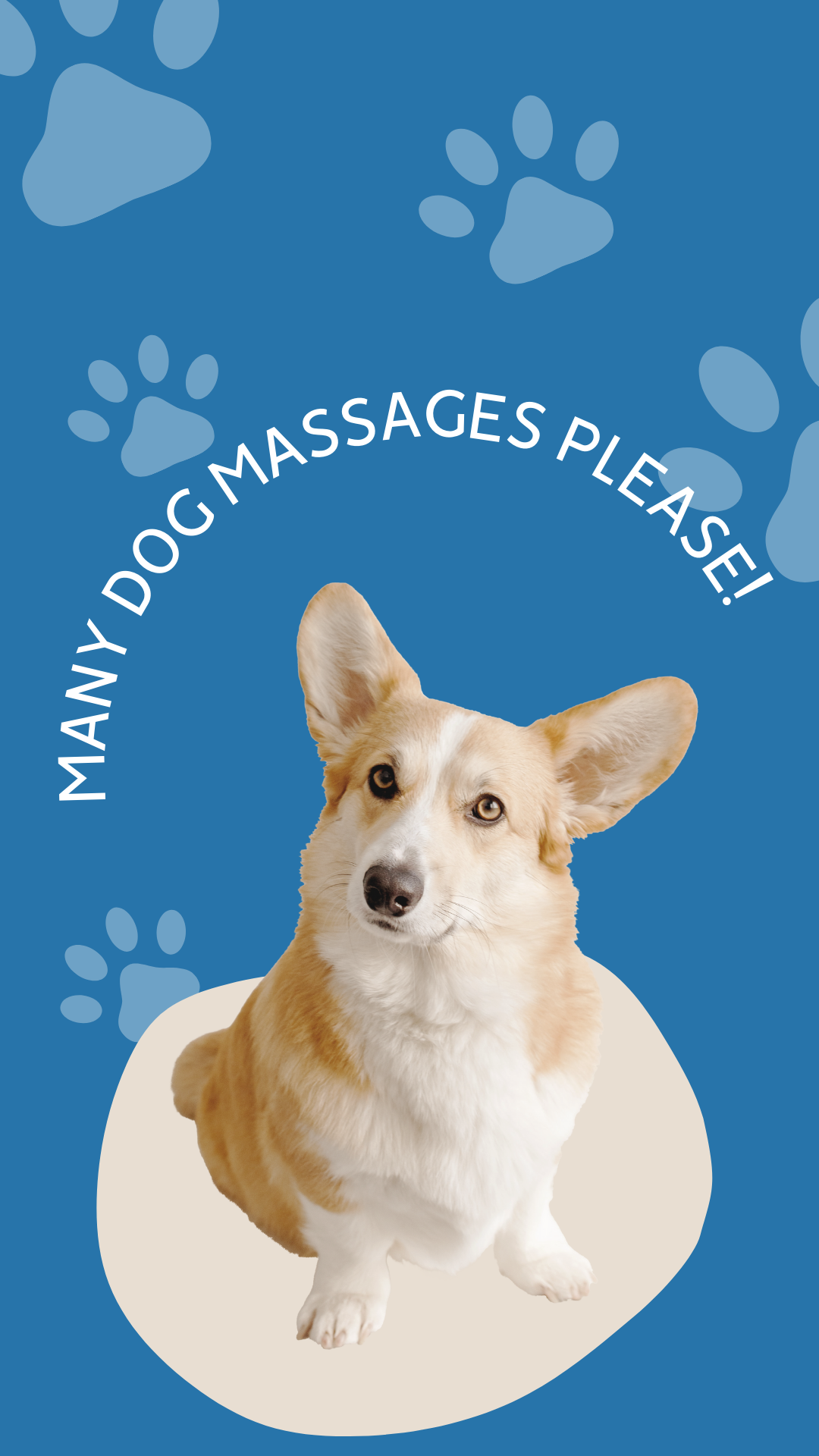How Often Should My Dog Get Massaged?
A common question I hear when fielding inquiries about canine massage is, “How often should I get my dog massaged?” So, let’s explore that!
My broad answer to the question, “how often should my dog get massaged?” is, “it depends on what’s going on with your dog”. Key things to consider to determine how often your dog should get massaged:
- Every dog is unique and will have his/her own needs
- Physical, emotional and mental health are factored in
- Each person’s goals are incorporated into the decision
- Your dog’s needs may change over time
- Your resources are included to help make a plan that is effective and manageable
Before we even have our first appointment, it’s helpful to review the top ways to prepare for your dog’s massage and understand a bit about what to expect from your dog, especially since *surprise* many dog’s will act more like dogs than humans (and human expectations) during their canine massage. Being prepared will help you get more out of the sessions and come ready for me to help bring out the best in your dog physically, emotionally, behaviorally and mentally.
During our first appointment we discuss their health history, current food/ supplements/medications, diagnosis, as well as your goals for your dog. We discuss why you are bringing your dog in for a massage. The reason and your dog’s condition make a huge difference on what happens and how we go about care for your pet. I also perform an evaluation prior to their first massage. This gives me a better idea of how they are utilizing their body, signs of pain and even emotional distress. Along with your goals, their needs and my expertise, I then give your dog a canine massage. I will incorporate in a variety of healing modalities for your dog’s best and highest good, which may include Reiki for animals, trigger point, sweating, aromatherapy and soothing strokes. (If a dog is extremely anxious or fearful and is not comfortable being handled at all, I will suggest to start with a Reiki session.)
We will come up with an initial plan together. I will give my recommendation to enhance their healing and well-being and then we sort out what makes sense with your resources to achieve optimal results while still making it manageable for you.
Frequently, it is most beneficial for your dog to be seen in closer intervals so that we can attain goals faster and get better results. If sessions are stretched too far apart, we will start over each time. Think of it like going to the gym. If you only go once a month and want to lose ten pounds, you might have a difficult time achieving your goal with that schedule. Their muscles have a memory and will revert to utilizing their body’s how they cope to avoid pain or protect themselves. The massage will relax them, help them feel better and also allow them to get much needed rest. Rest is key to healing – their body’s need to be in a restful state to allow their energy to focus on healing. When a dog is in distress – be it physical or emotional – they’re activated and their energy is drained to compensate for the pain and/or stress. This depletes their resources and makes healing much slower.
So, most often, we will have a series sessions timed closer together. We discuss how your dog is doing at home between sessions. I also provide you with appropriate at-home exercises to promote healing and comfort between sessions. My goal is to see improvement or in some cases, helping to stabilize your dog, depending on what is going on with your dog. When your dog plateaus, we start to stretch out the timeline. And then we find the cycle that works best for your dog at that given time.
For dogs that come in fully developed (adult dogs), healthy and fit, I will often recommend a schedule based on your goals to help maintain and enhance their well-being. Dogs meeting this criteria can sometimes by-pass the initial series of canine massages that are scheduled closer together. However, this series of massages scheduled closer together also help your dog build trust with me/the practitioner, learn the process and expectations which, results in more effective canine massages. It also helps to increase and enhance their normal level of operating. This is because massages help to reduce pain, release tension and encourage better rest so their bodies recover while sleeping.
To give you an idea of what are some regular schedules, here are some generalizations you can use as a guide. Geriatric, injured and those with health challenges tend to be seen two to four times a month. Occasionally, some dogs with severe issues will be seen twice a week. Puppies that are experiencing growing pains and that really need socialization and handling may get two to three massages a month. Healthy adult dogs with no physical or emotional issues can normally receive canine massages every three to six weeks.
Massage session cycles can change over time depending on the activities you do with your dog, how they’re aging and if they get injured. We work together to adjust accordingly and give them the best care possible.


Comments
Pingback: Top 8 Ways to Prepare for Your Dog's Massage - Animal Intuition